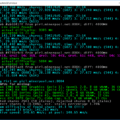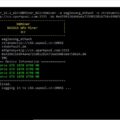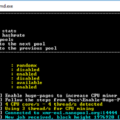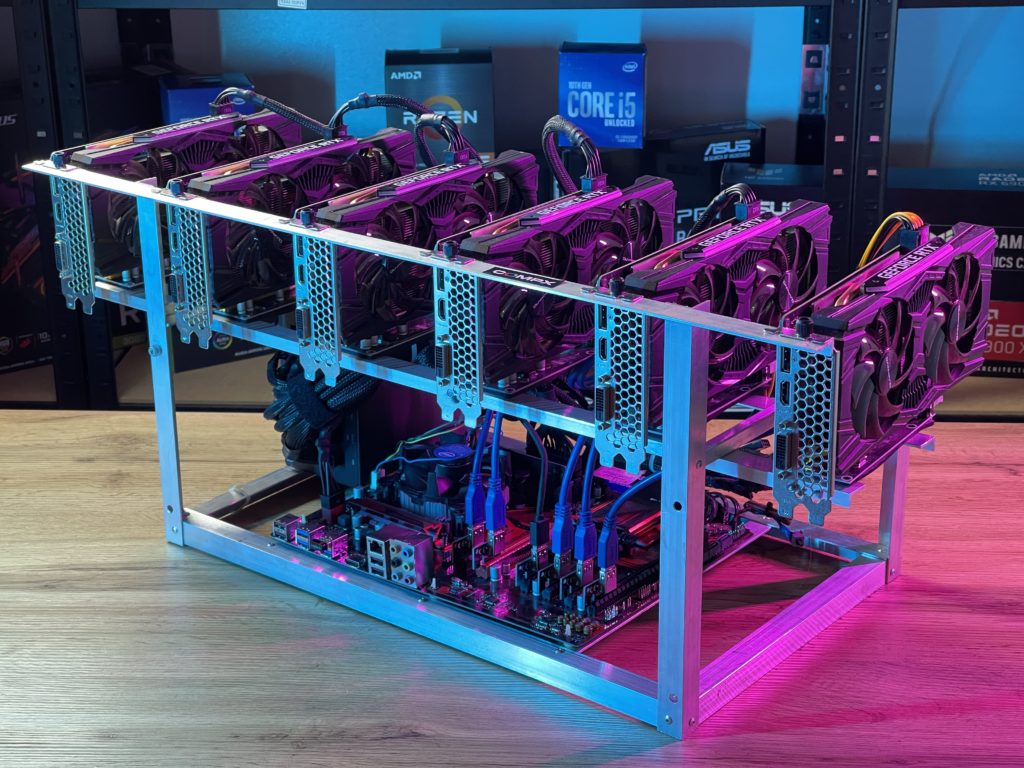NANOMINER
nanominer v1.9.2 – This is a software product developed by nanopool to create cryptocurrency structural modules based on the Ethash, KawPow, Ubqhash, Cuckaroo30, RandomX and RandomHash2 algorithms. The present version of nanominer was created to work with all cryptocurrencies based on these algorithms, including Ethereum, Ethereum Classic, QuarkChain, Ubiq, Monero, Pascal, Cortex, Ravencoin and many others. This version of nanominer runs on Windows or Linux with AMD or Nvidia graphics cards (with the exception of the RandomX and RandomHash2 algorithms, which are only supported on the processor). The Cuckaroo30 algorithm is only supported on 16GB AMD Radeon RX 570 GPUs. The Ravencoin KawPow algorithm is only supported on AMD GPUs, and Nvidia support will follow.
Testing with nanominer demonstrated high performance when working with Ethereum, Ethereum Classic, QuarkChain, Ubiq, Monero, Pascal, Cortex and other currencies. As a result of the study, it was found that nanominer works on a par with, and sometimes even better than, competing software products. Regardless, Nanominer stands out for its high stability and easy setup.
The new version of nanominer 1.9.2 with mining support for kawpow (Ravencoin), a package of improvements and bug fixes is already available for download at the links below:
v1.9.2:
- Fixed possible wrong GPU hanging detection in some network failure scenarios.
- Fixed confusing common options set up in config. Common option can now be set up inside algorithm option. Such configs are now equivalent for example:
watchdog=false
[ethash]
wallet=0x52bc44d5378309ee2abf1539bf71de1b7d7be3b5[ethash]
wallet=0x52bc44d5378309ee2abf1539bf71de1b7d7be3b5
watchdog=falsev1.9.1
Fixed issue with bsod.pw Ravencoin testnet pool.
v1.9.0
- KawPow algorithm for upcoming Ravencoin hardfork implemented on AMD GPUs. Performance is up to 6% better than other miners due to fully original implementation.
epochoption was added for Ethash testin
Table of Contents
Requirements
To work with Nvidia nanominer GPUs, you need the Nvidia driver 410.48 or later on Linux or 411.31 or later on Windows.
Dev fee
Payment for using nanominer is carried out in the form of a commission from mining to its wallets once in 2 hours of work.
- 1% of total mining time for Ethash and Ubqhash algorithms (72 seconds per 2 hours);
- 2% for KawPow on GPU (144 seconds per 2 hours);
- 2% for RandomX on CPU (144 seconds per 2 hours);
- 5% for RandomHash2 on CPU (180 seconds every hour).
- 5% for Cuckaroo30 algorithm (360 seconds per 2 hours)
Setup nanominer
To start Ethereum mining using nanominer, just enter your wallet into the configuration file.
When launched, nanominer reads the installation file config.ini from the current directory of the program. To assign a specific name to a configuration file, it must be written as the first argument on the command line.
for example
nanominer.exe config_etc.iniПри запуске с параметром командной строки -d (например, nanominer.exe -d) майнер отображает список обнаруженных устройств, включая их PCI-адреса и объем памяти. Чтобы использовать эту функцию в Windows, программа должна быть запущена из командной строки (cmd).
Наноминер не требует указания пулов в конфигурации. Если пул (или список пулов) не указан, то наноминер будет автоматически использовать пулы на nanopool.org, после чего будет выбран выбранный криптовалют. Публичные полные узлы QuarkChain (fullnode.quarkchain.io и fullnode2.quarkchain.io), которые поддерживаются разработчиками QuarkChain, по умолчанию используются для QuarkChain.
Когда наноминер запускается, он отображает основную информацию о работе в журнале консоли, включая текущую версию программы, название программы, количество и тип установленных видеокарт и текущие настройки программ.
Configuration File
The minimum configuration file for Ethereum can only contain a wallet:
wallet=<wallet>nanominer automatically uses Ethereum pools.
To work with Ethereum Classic on a coin, it must be indicated:
wallet=<wallet>
coin=ETCIn this case, nanominer will use the pools corresponding to Ethereum Classic.
Launching from command line
The best way to configure nanominer is to use a simple configuration file. For those who, for some reason, need to run one command line, there are scripts for this in the helper_scripts folder. A batch / shell file can be created to run nanominer with command line arguments. This file should call the cmdline_launcher script (cmdline_launcher.bat on Windows, cmdline_launcher.sh on Linux), which converts the command line to a configuration called config_cmdline.ini and launches the miner with it. At least one algorithm and wallet must be passed to the cmdline_launcher script. All common configuration parameters on the command line must be specified before the first parameter “algo”. Here are some command line examples for running Ethereum and Pascal:
Windows:
cmdline_launcher -algo ethash -wallet YOUR_ETH_WALLET -coin eth -rigName YOUR_ETH_WORKER -email YOUR_EMAIL -algo randomhash2 -wallet YOUR_PASC_WALLET -coin pasc -rigName YOUR_PASC_WORKER -email YOUR_EMAIL
Linux:
./cmdline_launcher.sh -algo ethash -wallet YOUR_ETH_WALLET -coin eth -rigName YOUR_ETH_WORKER -email YOUR_EMAIL -algo randomhash2 -wallet YOUR_PASC_WALLET -coin pasc -rigName YOUR_PASC_WORKER -email YOUR_EMAIL
Examples of Configuration Files
Example of a configuration file for Ethereum and Pascal:
[Ethash]
wallet = 0xffffffffffffffffffffffffffffffffffffffff
rigName = rig1
email = someemail@org
pool1 = eth-eu1.nanopool.org:9999
pool2 = eth-eu2.nanopool.org:9999
pool3 = eth-us-east1.nanopool.org:9999
pool4 = eth-us-west1.nanopool.org:9999
pool5 = eth-asia1.nanopool.org:9999
pool6 = eth-jp1.nanopool.org:9999
pool7 = eth-au1.nanopool.org:9999
[RandomHash2]
wallet = 123456-77
paymentId = ffffffffffffffff
rigName = rig1
email = someemail@org
pool1 = pasc-eu1.nanopool.org:15556
pool2 = pasc-eu2.nanopool.org:15556
pool3 = pasc-us-east1.nanopool.org:15556
pool4 = pasc-us-west1.nanopool.org:15556
pool5 = pasc-asia1.nanopool.org:15556
Example of a configuration file for Ethereum:
[Ethash]
wallet = 0xffffffffffffffffffffffffffffffffffffffff
rigName = rig1
email = someemail@org
pool1 = eth-eu1.nanopool.org:9999
pool2 = eth-eu2.nanopool.org:9999
pool3 = eth-us-east1.nanopool.org:9999
pool4 = eth-us-west1.nanopool.org:9999
pool5 = eth-asia1.nanopool.org:9999
pool6 = eth-jp1.nanopool.org:9999
pool7 = eth-au1.nanopool.org:9999
Example of an equivalent file for Ethereum:
[Ethash]
wallet = 0xffffffffffffffffffffffffffffffffffffffff
rigName = rig1
email = someemail@org
Example of a minimum file for Ethereum:
[Ethash]
wallet=0xffffffffffffffffffffffffffffffffffffffff
Example of a configuration file for Ethereum Classic:
[Ethash]
wallet = 0xffffffffffffffffffffffffffffffffffffffff
coin=Etc
rigName = rig1
email = someemail@org
pool1 = etc-eu1.nanopool.org:19999
pool2 = etc-eu2.nanopool.org:19999
pool3 = etc-us-east1.nanopool.org:19999
pool4 = etc-us-west1.nanopool.org:19999
pool5 = etc-asia1.nanopool.org:19999
pool6 = etc-jp1.nanopool.org:19999
pool7 = etc-au1.nanopool.org:19999
Example of an equivalent file for Ethereum Classic:
[Ethash]
wallet = 0xffffffffffffffffffffffffffffffffffffffff
coin=Etc
rigName = rig1
email = someemail@org
Example of a minimum file for Ethereum Classic:
[Ethash]
wallet=0xffffffffffffffffffffffffffffffffffffffff
coin=Etc
Example of a complete configuration file for solo QuarkChain mining:
[Ethash]
wallet=0xffffffffffffffffffffffffffffffffffffffff
shardId=0x30001
farmRecheck=200
coin=Qkc
pool1=localhost:38391
protocol=getwork
Example of a minimum file for solo QuarkChain mining:
[Ethash]
wallet=0xffffffffffffffffffffffffffffffffffffffff
coin=Qkc
pool1=localhost:38391
shardId=0x50001
Example of a file for solo QuarkChain mining on root shard:
[Ethash]
wallet=0xffffffffffffffffffffffffffffffffffffffff
coin=Qkc
pool1=localhost:38391
shardId=null
Example of a minimum file for QuarkChain mining using public nodes:
[Ethash]
wallet=0xffffffffffffffffffffffffffffffffffffffff
coin=Qkc
shardId=0x30001
Example of a configuration file for Ubiq:
[Ubqhash]
wallet = 0xffffffffffffffffffffffffffffffffffffffff
coin=Ubq
rigName = rig1
email = someemail@org
pool1 = us.ubiqpool.io:8008
pool2 = eu.ubiqpool.io:8008
Example of a minimum file for Ubiq:
coin=UBQ
wallet=0xffffffffffffffffffffffffffffffffffffffff
Example of a complete file for Monero:
[RandomX]
wallet = fffffffffffffffffffffffffffffffffffffffffffffffffffffffffffffffffffffffffffffffffffffffffffffff
rigName = rig1
email = someemail@org
pool1 = xmr-eu1.nanopool.org:14433
pool2 = xmr-eu2.nanopool.org:14433
pool3 = xmr-us-east1.nanopool.org:14433
pool4 = xmr-us-west1.nanopool.org:14433
pool5 = xmr-asia1.nanopool.org:14433
Example of an equivalent file for Monero:
[RandomX]
wallet = fffffffffffffffffffffffffffffffffffffffffffffffffffffffffffffffffffffffffffffffffffffffffffffff
rigName = rig1
email = someemail@org
Example of a minimum file for Monero:
[RandomX]
wallet = fffffffffffffffffffffffffffffffffffffffffffffffffffffffffffffffffffffffffffffffffffffffffffffff
Example of a complete file for Cortex:
[Cuckaroo30]
wallet = 0xffffffffffffffffffffffffffffffffffffffff
rigName = rig1
pool1=eu.frostypool.com:8008
pool2=us.frostypool.com:8008
pool3=asia.frostypool.com:8008
sortPools=true
Example of a complete file for Pascal:
[RandomHash2]
wallet = 123456-77
paymentId = ffffffffffffffff
rigName = rig1
email = someemail@org
pool1 = pasc-eu1.nanopool.org:15556
pool2 = pasc-eu2.nanopool.org:15556
pool3 = pasc-us-east1.nanopool.org:15556
pool4 = pasc-us-west1.nanopool.org:15556
pool5 = pasc-asia1.nanopool.org:15556
Example of an equivalent file for Pascal:
[RandomHash2]
wallet = 123456-77
paymentId = ffffffffffffffff
rigName = rig1
email = someemail@org
Example of a minimum file for Pascal:
[RandomHash2]
wallet = 123456-77
To mine Pascal in solo mode, please provide the ip and port of the Pascal full node Wallet software. The wallet number in the config does not matter in this case. The block payload will be the “Miner Name” installed in the wallet of the full Pascal node, followed by the nanominer version. Example file for individual Pascal mining using local wallet software:
wallet = 0
pool1 = 127.0.0.1:4009
Example of a configuration file for Ravencoin:
[Kawpow]
wallet = Rrrrrrrrrrrrrrrrrrrrrrrrrrrrrrrrrr
coin=Rvn
rigName = rig1
email = someemail@org
pool1 = rvn-eu1.nanopool.org:12433
pool2 = rvn-eu2.nanopool.org:12433
pool3 = rvn-us-east1.nanopool.org:12433
pool4 = rvn-us-west1.nanopool.org:12433
pool5 = rvn-asia1.nanopool.org:12433
pool6 = rvn-jp1.nanopool.org:12433
pool7 = rvn-au1.nanopool.org:12433
Example of a minimum file for Ravencoin:
wallet=Rrrrrrrrrrrrrrrrrrrrrrrrrrrrrrrrrr
Example of configuration file for mining Ethereum, Cortex, Ubiq and Pascal on same 8 GPUs rig using separate devices:
rigName = rig1
[Ethash]
wallet = 0xffffffffffffffffffffffffffffffffffffffff
devices = 0,1
[Cuckaroo30]
wallet = 0xffffffffffffffffffffffffffffffffffffffff
devices = 5
pool1=eu.frostypool.com:8008
[Ubqhash]
wallet = 0x1111111111111111111111111111111111111111
pool1 = eu.ubiqpool.io:8008
devices = 2,3,4,6,7
[RandomHash2]
wallet=123456-77
Log Files
The event log function on nanominer is automatically activated every time the program starts. The created log files contain all the information displayed on the console while the miner is working. By default, log files are saved in the log folder of the current program directory. Disabling event logging, as well as assigning a random directory to write log files, can be done using the appropriate configuration parameters (see Examples in the “Parameters” section of this file).
Remote Monitoring
Nanominer has a web interface for receiving rig statistics, detecting and managing other nanominer instances on the local network. You can edit the configuration of miners via the Internet, as well as restart the miners. To perform these steps on a running instance of nanominer, its configuration must contain a password for the web interface (see the webPassword parameter). By default, nanominer starts an HTTP server on port 9090, which can be found at http://127.0.0.1:9090. In the configuration file of the program, the port can be configured, and the API function can be disabled using the webPort parameter (or it can be set to 0 to disable the web interface). BoringAPI is also supported for getting rig statistics, which can be found at http://127.0.0.1:9090/stats.
Nanominer also supports EthMan’s network API program for monitoring a rig. By default, it opens port 3333 in read-only mode without the ability to restart the miner or installation through the network. In the program configuration file, the port can be configured, and the API function can be disabled using the mport function. The configuration file also allows you to set a password for monitoring using the ethmanPassword option.
Automatic Restart Function
At default settings, nanominer will automatically restart if it detects critical errors in the GPU or lag. (These errors usually occur due to hardware problems or GPU overclocking.) The automatic restart function can be disabled using the watchdog parameter.
Similarly, the minHashrate parameter (minimum hashrate) allows the user to set the minimum hashrate, which, if exceeded, will cause the miner to restart. This feature uses the average hash over the last ten minutes, as shown in blue in the console log. If the average hash rate in 10 minutes is below the set value, the miner will restart. At default settings, the minimum hash is not set.
Another function on nanominer that improves the automatic functioning of the miner is handled by the restarts parameter. It sets how many times the miner reboots before the worker (rig) is rebooted. By default, the miner will only reboot itself.
More information about using these functions can be found in the “Parameters” section of this file.
Parameters
Settings for nanominer can be found in the configuration file with the extension * .ini (config.ini by default). The configuration file may contain general parameters and algorithm parameters (in sections with the corresponding algorithm names). Partition names can be defined as “Ethash”, “KawPow”, “Ubqhash”, “Cuckaroo30”, “RandomX” or “RandomHash2”. The configuration file should be in the following format:
commonparameter1=commonvalue1
commonparameter2=commonvalue2
commonparameterX=commonvalueX
...
[AlgoName1]
devices=0,1
wallet = wallet1
algoparameter1=algovalue1_1
algoparameter2=algovalue1_2
algoparameterY=algovalue1_Y
...
[AlgoName2]
devices=2,3
wallet = wallet2
algoparameter1=algovalue2_1
algoparameter2=algovalue2_2
algoparameterZ=algovalue2_Z
[AlgoName3]
devices=4,5
wallet = wallet3
...
More configuration examples can be found below.
This file allows blank lines and comments. Comment lines must begin with “;” (semicolon). Parameters and values are not case sensitive, which means that it does not matter for the program whether you enter ETH, eth or Eth, or whether you enter a wallet or wallet. If the parameter is set to the wrong value, the default value will be used instead (note that this rule does not apply to the wallet parameter).
The following is a list of parameters that can be set on a nanominer.
wallet
Required. This is the user’s wallet to which funds will be credited.
paymentId
An optional algorithm parameter can be defined for wallets created on the exchange, where the user has a personal payment number in addition to his wallet. Currently used only for Pascal.
coin
Optional parameter of the algorithm. This selects the default coin for the pool. The default pool is nanopool.org. The coin parameter takes one of the following values: ETH (or Ethereum), ETC (or Ethereum Classic), RVN (or Raven), QKC (or QuarkChain), UBQ (or Ubiq), XMR (or Monero), CTXC (or Cortex) , PASC (or Pascal). When a coin is indicated and equal to one of the values mentioned above, nanominer automatically tries to determine the pool necessary for its functioning if none of them was provided in a separate parameter. If a coin is indicated, but the nanominer cannot recognize it, then the name of the coin is used only for registration. If no coin is specified, the nanominer will use the default coin for the corresponding algorithm. Moreover, if nanopool.org is specified in the configuration file for Ethereum, Ethereum Classic or Monero, nanominer will determine the coin from the pool settings.
Important: when using nanominer to mine Ethereum Classic in the pool, by default you need to define a coin (coin = ETC). In this case, the pools will be determined automatically.
If the pools are clearly defined using the parameters pool1, pool2, …, then the nanominer will function in accordance with the tasks it receives from these pools.
rigName
Optional parameter of the algorithm. It can be specified in the general parameters section instead of the algorithm section, which will be applied to all algorithms simultaneously. This is the name of the mining installation (pc / worker). This will be displayed in the pool statistics. If this parameter is not specified, the program will generate a unique name and provide it to the pool. To completely disable rigname, just set an empty string for it
rigName=Optional parameter of the algorithm. It can be specified in the general parameters section instead of the algorithm section, which will be applied to all algorithms simultaneously. This is the email address of the user. It is provided in the pool where the rig will operate. The pool can use it when sending service notifications.
pool1, pool2, …
Optional parameter of the algorithm. This defines the set of mining pools used. Values must be in url: port format (for example, pool1 = eth-eu1.nanopool.org: 9999). Parameters must be defined in ascending, sequential order, from pool1 to poolN (for example: pool1, pool2, pool3). If a list of pools is specified, the best pool will be selected from the order of the list of pools. If sortPools = true is specified, the best pool will be selected by connection speed. If a pool (or list of pools) is not defined, nanominer will automatically use pools on nanopool.org that correspond to the selected cryptocurrency. For QuarkChain, public full nodes are used if pools are not defined. For Ubiq, Ubiqpool.io pools are used if pools are not defined.
protocol
Optional parameter of the algorithm. Can be used to set the pool protocol to a stratum. If not specified, nanominer will try to automatically determine the pool protocol.
rigPassword
Optional parameter of the algorithm. Password for mining installation (or worker). This may be necessary when working with pools that require registration and setting a rig password.
watchdog
Optional general parameter. This parameter controls the miner restart function when critical GPU errors or delays occur. It takes the value true or false. By default, true – automatic restart – is activated.
minHashrate
Optional parameter of the algorithm. This is the minimum allowed hashrate. This function monitors the overall hash of the rig and compares it with this parameter. If five minutes after the miner starts, the set minimum is not reached, the nanominer will automatically restart. Similarly, the miner will restart if for any reason the average hash in ten minutes falls below the set value. This value can be set using an additional modifier letter, which represents a thousand per kilogram or a million per megahash per second. For example, if you set the value to 100 megahashes per second, you can write the values 100M, 100.0M, 100m, 100000k, 100000K or 100000000. If this parameter is not set, the miner will not restart (except for the situations described in the watch section).
devices
Optional parameter. These are the video cards that will be used by the miner. If you do not want to run the miner on all available GPUs, but only on some of them, their numbers can be specified in the devices parameter, separated by a comma or space. Nanominer numbers the GPUs starting from scratch in ascending order of their PCI addresses. You can see the list of available GPUs and their order by running nanominer with the -d command-line option:
nanominer -dFor example, if there are four GPUs in the system (0, 1, 2, 3) and all but the second to the last (with index 2) must be installed in the mine, then the device option should be installed in the following way:
devices=0,1,3The order of the devices determines the order of the displayed hash rate. For example, if it is set as:
devices=3,1,0then, in the hash line, GPU3 will be displayed first, then GPU1, and finally GPU0.
checkForUpdates
Optional general parameter. This parameter accepts true or false values (by default – true). If this parameter is set to false, nanominer stops checking for the latest release version every time it starts.
autoUpdate
Optional general parameter. This parameter is either true or false (false by default). If this parameter is set to true and update checking is enabled, then nanominer will be updated every time it starts, if a newer version is available.
restarts
Optional general parameter. This parameter sets the number of miner restarts before rebooting the rig. In case of problems with the GPU, such as hardware errors or lag, or in case of deterioration of the hashrate (if the minhashrate option is used), nanominer will restart. However, some errors cannot be fixed by restarting the program. In such cases, you must restart the installation. To reboot, the miner loads the reboot.bat script from the current directory if it works on Windows, or reboot.sh if on Linux:
rebootThe reboot.sh file on Linux must have execute rights for it to work. Typical reboot.bat script contents for Windows:
shutdown /r /t 5 /fThe script must be written by the user. To run the reboot script instead of restarting the miner with every critical error, simply install:
restarts=0








